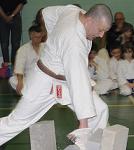How to print the content of a Rich Edit Control
By Roger AllenIntroduction
I see many questions about printing, when helping people on the VC++ forum here at CP, but the one thing I have never been able to help people with, was printing the content of a Rich Edit Control. So off I went to the documentation to try and do something about it.
So how did I do?
- Yes, you can print a Rich Edit Control
- But the print preview sucks
I will be continuing to look into the print preview problems with the Rich Edit Control, but in the meantime, I though I would make available my solution to actual printing.
What to do to get a Rich Edit Control to print?
A Rich Edit Control has built in support for printing, but it is covered by a number of functions which have to be used in the correct way to get output on your target printer DC. These 3 functions are:
SetTargetDevice()This function in effect attaches the printer DC to the Rich Edit control, until you do another call to this function passing
NULLas the newHDC.FormatRange()This procedure looks at the start/end characters provided and see what part of the control's content will be visible in the output range.
DisplayBand()This procedure actually does the plotting of the output.
What steps do I need to take?
First you need to determine how many pages of output you are going to require for your printout. This will depend on the control content and the printable area of the paper etc. My example assumes that the Rich Edit Control will print all its content and have all of every page to print to when generating output, so this is how I calculate the number of pages:
BOOL CRichEditPrintView::OnPreparePrinting(CPrintInfo* pInfo)
{
CDC dc;
CRect page;
FORMATRANGE fmtRange;
long lLineWidth;
int last = 0;
AfxGetApp()->CreatePrinterDC(dc);
if (!dc.m_hDC)
{
TRACE("Failed to get printer DC/n");
return FALSE;
}
dc.SaveDC();
pInfo->SetMaxPage(0);
// get the page size in twips (1440 twips/inch)
page.left = 0;
page.top = 0;
page.right = ::MulDiv(dc.GetDeviceCaps(PHYSICALWIDTH),
1440, dc.GetDeviceCaps(LOGPIXELSX));
page.bottom = ::MulDiv(dc.GetDeviceCaps(PHYSICALHEIGHT),
1440, dc.GetDeviceCaps(LOGPIXELSY));
lLineWidth = ::MulDiv(dc.GetDeviceCaps(PHYSICALWIDTH),
1440, dc.GetDeviceCaps(LOGPIXELSX));
// setup the format range attributes
fmtRange.hdc = dc.m_hDC;
fmtRange.hdcTarget = dc.m_hAttribDC;
fmtRange.rc = page;
fmtRange.rcPage = page;
// determine the correct output for this page
m_Control.SetTargetDevice(dc, lLineWidth);
while (last < m_Control.GetTextLength())
{
fmtRange.chrg.cpMin = last;
fmtRange.chrg.cpMax = -1;
// measure the data that goes on this page
// just measuring, not displaying
last = m_Control.FormatRange(&fmtRange, FALSE);
fmtRange.chrg.cpMax = last;
pInfo->SetMaxPage(pInfo->GetMaxPage() + 1);
}
m_Control.FormatRange(NULL, FALSE);
// release the cached DC information stored in SetTargetDevice
dc.RestoreDC(-1);
dc.DeleteDC();
return DoPreparePrinting(pInfo);
}
This should give us the correct number of pages of output for the content.
Do the OnPrint() version
The actual version that does the printing is very similar except that:
- It skips over pages already printed.
- It prints the output.
The code looks like:
void CRichEditPrintView::OnPrint(CDC* pDC, CPrintInfo* pInfo)
{
long lLineWidth = ::MulDiv(pDC->GetDeviceCaps(PHYSICALWIDTH),
1440, pDC->GetDeviceCaps(LOGPIXELSX));
FORMATRANGE fmtRange;
CRect rect;
CRect page;
int last = 0;
// get the page size in twips (1440 twips/inch)
page.left = 0;
page.top = 0;
page.right = ::MulDiv(pDC->GetDeviceCaps(PHYSICALWIDTH),
1440, pDC->GetDeviceCaps(LOGPIXELSX));
page.bottom = ::MulDiv(pDC->GetDeviceCaps(PHYSICALHEIGHT),
1440, pDC->GetDeviceCaps(LOGPIXELSY));
// for our example, the rect is the page
rect = page;
// setup the format range attributes
fmtRange.hdc = pDC->m_hDC;
fmtRange.hdcTarget = pDC->m_hAttribDC;
fmtRange.rc = rect;
fmtRange.rcPage = page;
pDC->SaveDC();
// determine the correct output for this page
m_Control.SetTargetDevice(*pDC, lLineWidth);
for (UINT i = 0 ; i < pInfo->m_nCurPage ; i++)
{
fmtRange.chrg.cpMin = last;
fmtRange.chrg.cpMax = -1;
// measure the data that goes on this page
// just measuring, not displaying
last = m_Control.FormatRange(&fmtRange, TRUE);
fmtRange.chrg.cpMax = last;
// when we drop out of the loop, we should
//print the correct part of the output for the current page
}
m_Control.DisplayBand(&rect);
m_Control.FormatRange(NULL, FALSE);
// release the cached DC information stored in SetTargetDevice
pDC->RestoreDC(-1);
}
And that's it basically.
Problems, problems, problems
As mentioned earlier, the print preview of the output sucks due to the Rich Edit Control not scaling the font(s) and spacing the text correctly for the Screen DC used during the preview process. I will be continuing to look into this. My best guess at the moment may be to implement a complete RTF output library, that will be able to plot the RTF text correctly for preview and print, but its a lot of work.
Enjoy - or not when it comes to Rich Edit Controls.
License
This article, along with any associated source code and files, is licensed under The Code Project Open License (CPOL)
About the Author
Roger Allen
| A research and development programmer working for a pharmaceutical instrument company. I am one of those lucky people who enjoys his work and spends more time than he should either doing work or reseaching new stuff. I can also be found on the odd counter-strike server sometimes, or playing DDO on the european Devourer server (Send a tell to "Ordinary" who is my current main) I am also a keep fit fanatic, doing cross country running and am seriously into [url]http://www.ryushinkan.co.uk/[/url] Karate at this time of my life, training from 4-6 times a week. Apart from computer games and fitness, I also enjoy Juggeling, unicycling and other circus type skills. I also have 2 step daughters, aged 21 and 23. They are both nice girls, but expensive to keep in food/clothes/mobile phones/cello's/travel etc, Plus I get insulted by them a lot!
|
From: http://www.codeproject.com/KB/printing/richeditprint.aspx





 本文介绍如何实现富文本编辑控件的内容打印,包括设置目标设备、确定打印范围及实际绘制过程。作者解决了实际打印问题,但指出预览功能仍存在问题。
本文介绍如何实现富文本编辑控件的内容打印,包括设置目标设备、确定打印范围及实际绘制过程。作者解决了实际打印问题,但指出预览功能仍存在问题。
















 373
373

 被折叠的 条评论
为什么被折叠?
被折叠的 条评论
为什么被折叠?








